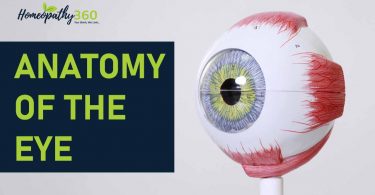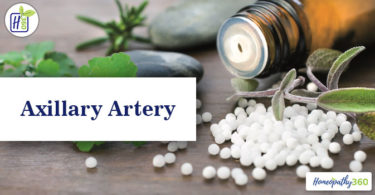ABSTRACT:
In todays life, majority of the popular is suffering from abdominal complaints, which might be due to lack of proper attention and care of health. So to get quick rid from these complaints, many people might be using medicine which help them to get relief but not sureit is not wrong for some time but for longer time consuming such medicines can be harmful and can lead to many consequences. So, in homoeopathy there are medicines which not only provide relief but at the same time patient get cure without any harm and becomes physical as well as mentally healthy. In Homoeopathy ,we are not treating disease but person as a whole. In homoeopathy we have certain medicines which have affinity to particular organs. So, this article is mainly focusing on organ specific homoeopathic medicines which act directly on organs.
KEYWORDS:
Abdominal organs, Nine quadrants, Location of abdominal organs, applied anatomy, Organ specific medicine
INTRODUCTION:
As we all know, abdomen is magic box of human body because God has not left any space in abdomen and there are many function performed by abdomen.so,for easy study of abdomen is divided into 9 region by 2 horizontal and 2 vertical planes . Upper horizontal plane is called transpyloric plane and lower horizontal plane is called transtubercle plane . Right and Left vertical planes are called Right and Left lateral plane.The 9 region marked out in this way are arranged in 3 vertical zone – median , right and left.from above to downwards median region are epigastric , umbilical and hypogastric.The right and left in same order hypochondriac ,lumbar ,iliac.
LOCATION OF ABDOMINAL ORGANS:
(1) Stomach:
In abdominal organs, stomach is very important act as reservoir of food and help in digestion. It occupies epigastric, umbilical and left hypochondriac region.
(2) Liver:
Liver is largest gland of body and vital organ which occupies right hypochondriac, epigastric and extend to left hypochondriac region.
(3) Small intestine:
It is divided into 3 part
Duodenum
Jejunum
Ilium
Duodenum lies above level of umbilical opposite to L1,L2,L3 vertebrae. Jejunum and ilium are suspended from the posterior abdominal wall by mesentery.
(4) Pancreas:
It is partly endocrine and partly exocrine gland .It transversely across posterior abdominal at the level of L1,L2 vertebrae.
(5) Spleen:
It is highly vascular lymphoid organ lies mainly in hypocondriac and partly in epigastric region.
(6) kidney:
Epigastric , hypochondriac, lumbar and umbilical region. They extend from T12 to L3. Right kidney is placed slightly lower than left kidney.
APPLIED ANATOMY:
(1) Stomach:
Gastric pain
Peptic ulcer
Gastric Carcinoma
Pyloric obstruction
Gastro-Eesophageal Reflux Disease (GERD).
(2) Liver:
Hepatitis
Cirrhosis of Liver
Metastatic tumor in Liver
Pringle Manoeuvre
(3) Small intestine:
Appendicitis
peptic ulcer (1st part duodenum)
Carcinoma
Congenital stenosis (obstruction)
(4) Pancreas:
Diabetes mellitus
carcinoma of head of pancreas
pancreatic cyst
pancreatitis (acute and chronic)
Digestive disturbance because of lack of pancreatic juice secretion
(5) Spleen:
Splenomegaly
Hypersplenism
Splenic infraction.
(6) Kidney:
Nephritis
Pyelonephritis
Renal Calculi
Renal Tuberculosis
Renal metastatic tumour
ORGAN SPECIFIC HOMOEOPATHIC MEDICINE
Stomach
Carbo vegetabalis
Lycopodium
Natrum Carbonicum
Nux vomica
Pulsatilla
Antimonium Crudum
Arsenicum album
Bryonia alba
Cinchona officinalis
Colocynthis
Masgnesia Phosphorica
Natrum Phos
Liver
Chelidonium
Arsenicum Album
Phosphorus
Cardus Marianus
Picricum acidum
Lachesis
Chionanthus
Natrum Sulphuricum
Crotalus Horridus
Berberis Vulgaris
Small Intestine
Nux Vomica
Podophyllum
Sulphur
Argentum Nitricum
Asafoetida
Colocynthis
Lilium Tigrinum
Lycopodium
Natrum Carbonicum
Pancreas
Arsenicum album
Belladonna
Conium
Iris Versicolor
Iodum
Kali iodum
Mercurius
Phosphorus
Spleen
Agaricus Muscarius
Agnus CAstus
Ammonium Muriaticum
Arsenicum Metallicum
Cimicifuga
Cobaltum
Dioscoria Villosa
Ceanothus
Tinospora cordifolia
Polymnia Uvedalia
China officinalis
Aranea Diadema
Bryonia
Succinum
Kidney
Apis Mellifica
Arsenicum Album
Aurum Muriaticum
Belladonna
Cantharis
Convallaria
Digitalis
Berberis Vulgaris
Colocynthis
Occimum Canum
CONCLUSION:
Medicines which have affinity for the specific organs will definitely relieve complaints & provide permenant ease to patient in the suffering. In certain incurable diseases such medicines are useful as palliative medicines.
REFRENCES:
Chaurasia B. D., Human Anatomy, Vol 2, 7th edition, CBS Publishers
Gerard Tortora, Principles of anatomy & physiology, 14th Edition, Wiley Publisher
Rai Bahadur Bisambar Das, Select Your Remedy, 22nd revised Edition, B. jain Publisher
Samuel Lilienthal, Homoeopathic Therapeutics, 24th impression, B. Jain Publisher
Links:
www.peacehealth.org
www.drhomeo.com
www.wellinghomoeopathy.com
www.happyaging.in
Guided By:
Dr Bhavita Malvi,
Phd Scholar, MD(Hom),
Assistant Professor,
Department of Anatomy,
Parul Institute of Homoeopathy & Research
Parul University




